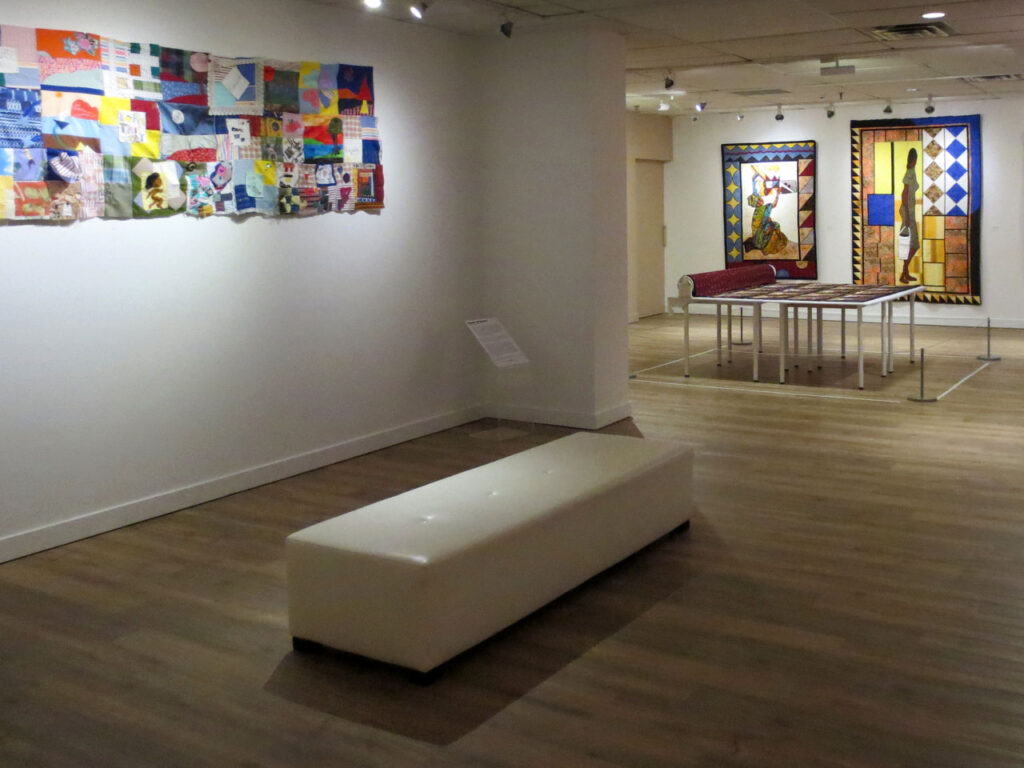Nick and I saw an exhibition at the AGO on Wednesday that has popped up, over and over again, in our conversations since. The two of us have seen a lot of art together and I can’t remember a show that sparked as many discussions as did Tunirrusiangit, on display at the gallery until Sunday.
The title means “The Gifts They Gave” in Inuktitut, with the givers of those gifts being an artist who is known as having been the “grandmother of Inuit art” Kenojuak Ashevak, and her nephew Timootee (Tim) Pitsiulakand. This is the first time that Inuit art has been showcased in the AGO’s largest exhibition space.
Kenojuak Ashevak was born in 1927 and died five years ago at the age of 85. Her nephew, Tim, was born in 1967, and sadly died too young at 49, in 2016. Influenced by his aunt, he began drawing at a young age. This show marked the first retrospective of his work.
Coming from Nunavut, Canada’s newest and northernmost territory, which separated officially from the Northwest Territories in 1999, these two artists created their beautiful art in one of the coldest, and most remote and sparsely settled regions in the world. The uniqueness of their home is very much reflected in their choices of subjects for their art, which very much focuses on nature. Some of Tim’s pieces captured the introduction of technology to this northern environment, including unexpected images of laptops and digital cameras.
One of the most remarkable things about the work of both artists is that their original drawings were done using plain old pencil crayons and felt-tip markers. Seeing these common supplies used to create such stunning artworks was mind-blowing. In the case of the elder artist, many of her drawings were then turned into lithographic prints. The exhibition includes a number of examples of the original and then the prints.
The exhibition begins with the works of Kenojuak Ashevak …

↑ The Woman Who Lives in the Sun, 1960. Stonecut on paper. ↑

↑ Spirit of the Owl, 1980. Lithograph. ↑

↑ Owl Sentinal, 1979. Lithograph. ↑

↑ This one, which is untitled, is one of the originals created with regular graphite pencil, a coloured pencil and felt-tip marker. ↑

↑ Large Bird, the original hand-drawn piece, using pencil crayon and marker. ↑

↑ Large Bird, the stone-cut and stencil print, reflecting the original drawing (above). ↑
Then visitors are shown the pieces by Tim Pitsiulakand. Not to repeat myself, but all his drawings were coloured with regular pencil crayons! If you’d like to read a good article about him and his career, ther is one on the CBC’s site here.

↑ We were fortunate to have been given a tour of the exhibition, lead by one of its curators, Georgiana Uhlyarik. Here she is discussing the drawing “GoPro Hydrophone, 2016”. ↑

↑ Pointing out the GoPro digital camera. The person in the image is dangling the camera down into the water. ↑

↑ Computer Generation, 2012. ↑

↑ Tim was also a talented jewellery maker and sculpture. Here is a box made from copper, silver and stone, called “Caribou Hunt”. The items on the left were all enclosed within the box. Our guide and curator, Georgiana, was present when each of those items, which had previously been left wrapped in paper by the collector, was revealed. Each was a complete surprise. ↑

↑ And here I am, to put the most remarkable feature of this artwork into perspective — It is minuscule! ↑

↑ This was one of our favourite pieces in the show, Swimming Bear, created with india ink and a white pencil crayon. ↑

↑ One of six curators involved in putting this show together, Georgiana Uhlyarik, Canadian Art, Indigenous and Canadian Art Department, AGO, with Tim Pitsiulakand’s “Swimming With Giants, 2014.”
This beautiful show is included with regular admission to the AGO, however, these photos give you a sense of the crowd level on a Wednesday evening, the one evening a week when the gallery is free. Not too crowded at all! So, if you’re near the gallery tomorrow evening, I encourage you to pop in and see this thought provoking art. As mentioned, Tunirrusiangit will be on display until this Sunday, August 12th, after which each piece will be returned to the collectors and galleries who generously loaned them for the exhibition.
Thank you for reading,
xo loulou












